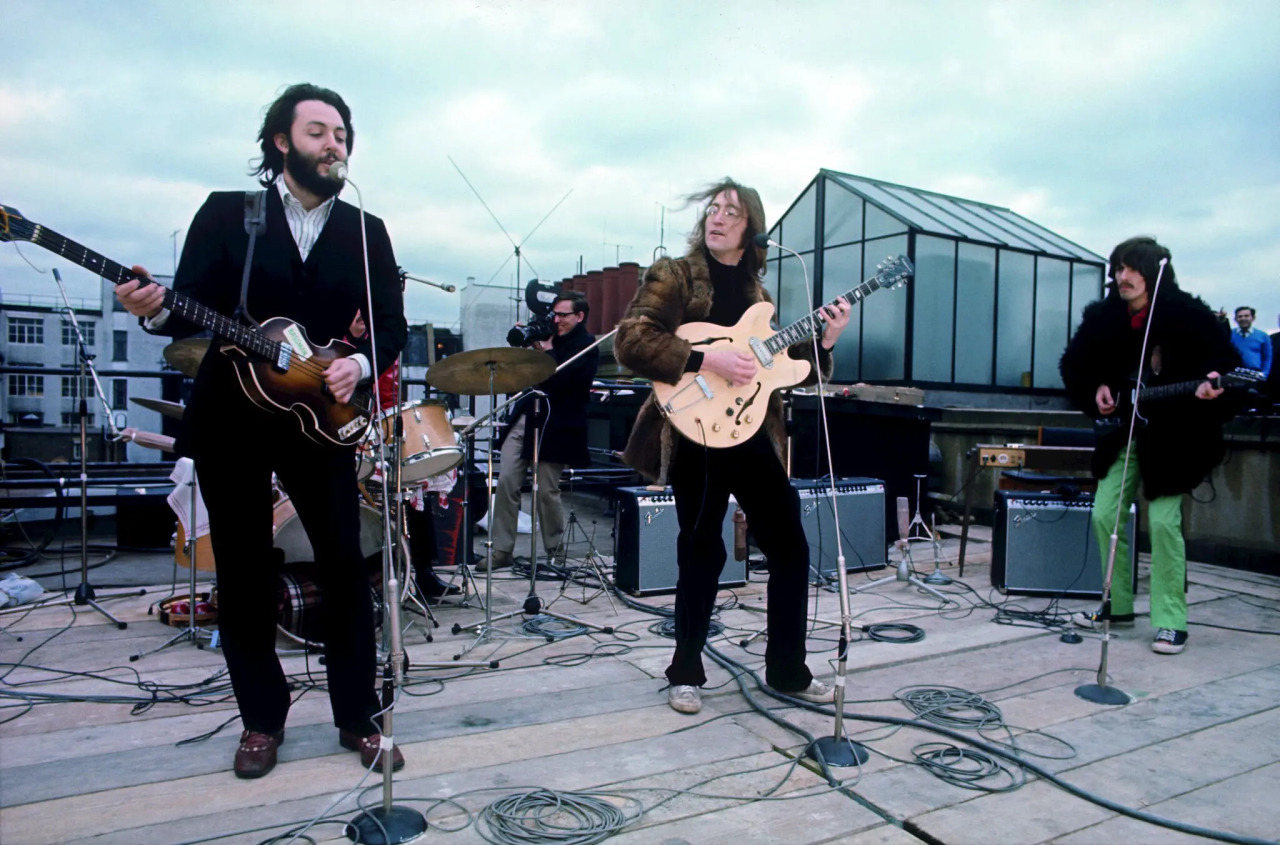
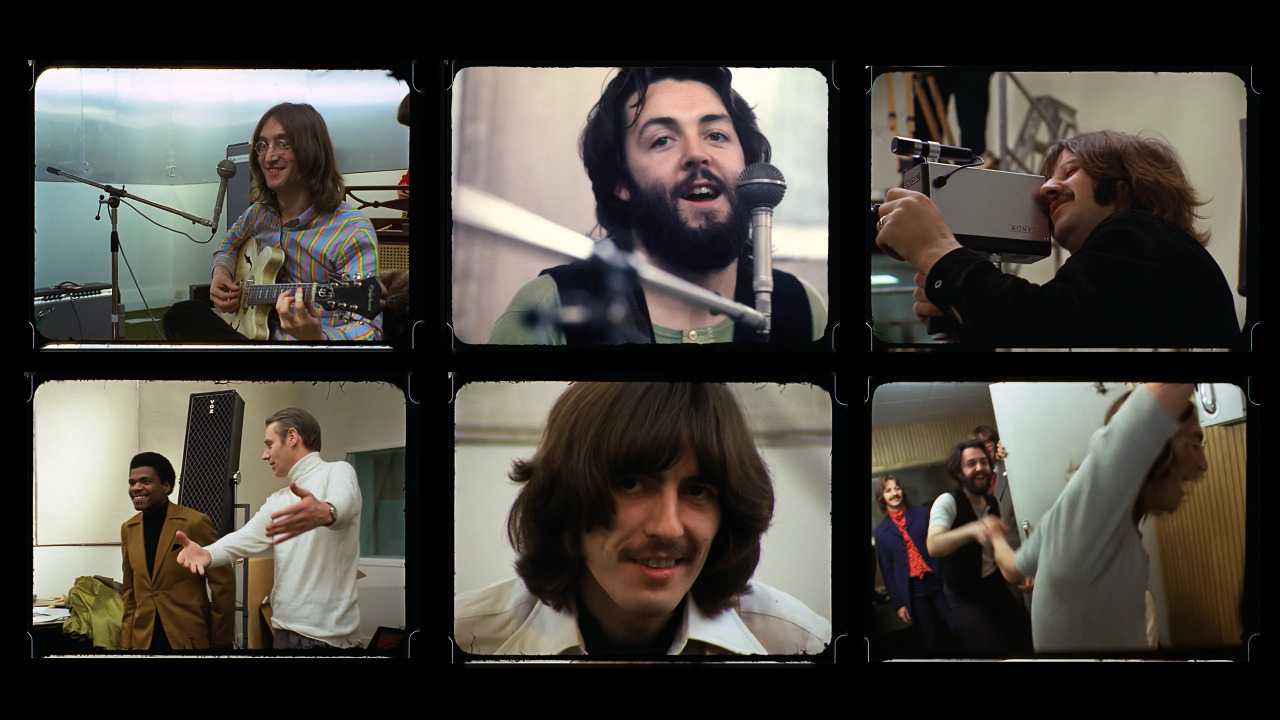
In split screen we see crowds gather on adjoining rooftops, like chimney sweeps from Oliver Twist. On the streets below, suited businessmen and young office workers crane their necks to the sky. “Where’s the noise coming from?” asks an onlooker.
Get back, Jojo!
It’s the Beatles as none would ever see or hear them again—their last live performance as a group, January 30, 1969. It’s also the Beatles as none of us, 52 years on, has ever seen them. The approximately 43-minute sequence from director Peter Jackson’s forthcoming documentary, The Beatles: Get Back—screened exclusively for Vanity Fair—shows the full, uninterrupted concert on the roof of 3 Savile Row, the band’s headquarters, including iconic performances that would appear on their last album, Let It Be. The original footage, taken from at least nine different cameras, has been scrubbed to astonishing clarity, detail, and color, a rapturous window in time.
Original Audio with Lyrics
👇 📺 👇
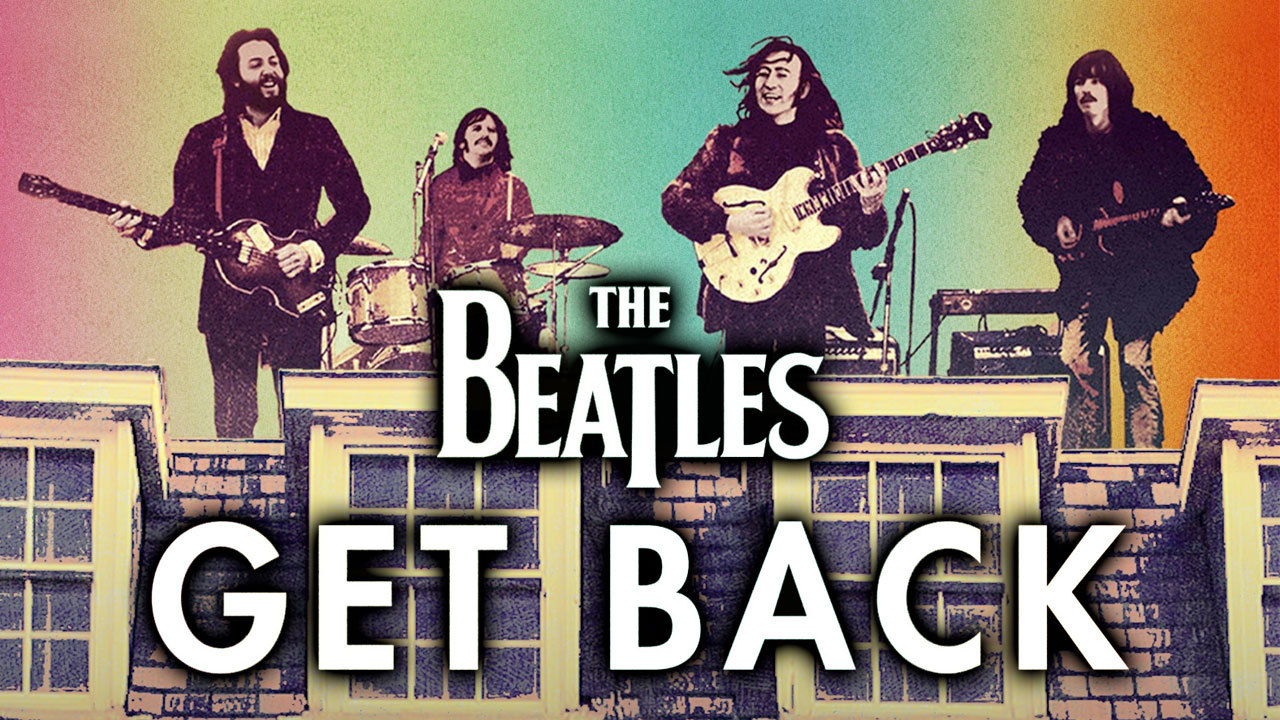
The director’s new documentary weaves together hours of unseen footage to dispel many myths about the band’s final months. John Harris, who was involved in the project, tells the inside story
On paper, the idea looked brilliant. In the opening weeks of January 1969, the Beatles were working up new songs for a televised concert, and being filmed as they did so. Where the event would take place was unclear – but as rehearsals at Twickenham film studios went on, one of their associates came up with the idea of travelling to Libya, where they would perform in the remains of a famous amphitheatre, part of an ancient Roman city called Sabratha. As the plan was discussed amid set designs and maps one Wednesday afternoon, a new element was added: why not invite a few hundred fans to join them on a specially chartered ocean liner?
Over the previous few days, John Lennon had been quiet and withdrawn, but now he seemed to be brimming with enthusiasm. The ship, he said, could be the setting for final dress rehearsals. He envisaged the group timing their set so they fell into a carefully picked musical moment just as the sun came up over the Mediterranean. If the four of them had been wondering how to present their performance, here was the most gloriously simple of answers: “God’s the gimmick,” he enthused.
Paul McCartney seemed just as keen: “It does make it like an adventure, doesn’t it?” he said. Ringo Starr said he would rather do the show in the UK, but did not rule out the trip: “I’m not saying I’m not going,” he offered, which sounded as if he was open to persuasion.
But George Harrison was not interested. He feared “being stuck with a bloody big boatload of people for two weeks”. The idea of getting to Libya on a ship, he insisted, “was very expensive and insane”. When Lennon suggested they could get a cruise liner for free from P&O, Harrison flatly pointed out that, despite their celebrity, the Beatles had trouble even getting complimentary guitar amps.
Among an array of other ideas for a concert venue, there were also mentions of the Royal Albert Hall, the Tate Gallery, an airport, an orphanage and the Houses of Parliament. But whatever the suggested setting was, everything seemed to founder on a mixture of inertia, logistical impossibility and Harrison’s implacable opposition. Indeed, two days after the longest conversation about Sabratha, Harrison would temporarily walk out of rehearsals, with the deadpan line: “See you round the clubs.” When he returned, it was seemingly on the basis that the idea of a spectacular live performance would be shelved.
In the end, there was a compromise. Having begun working at Twickenham, the Beatles relocated to a makeshift studio in the basement of 3 Savile Row, the central London address that was the home of their company Apple. The plan for a televised concert was abandoned, and it was agreed – just about – that the group were now being filmed for a feature-length documentary. And on Thursday 30 January, the four of them – joined by the American keyboard player and singer Billy Preston – played, with a mixture of panache and joyous energy, on the Apple building’s roof. No one knew it was their last public performance, but, in retrospect, they ensured that such a significant moment passed off almost perfectly.
It is a cold January morning in 1969, and three of the four Beatles are assembled in a cavernous film studio in London, with cameras rolling and microphones everywhere. “Lennon’s late again,” Paul McCartney says matter of factly, as he plugs in his bass guitar.
With Ringo Starr and George Harrison sitting groggily before him, a tray of toast and jam by their side, McCartney starts to strum and sing, searching for inspiration. Within minutes, a mid-tempo groove takes shape and a familiar vocal melody emerges. “Get back,” he sings in a faint howl. “Get back to where you once belonged.” Almost like magic, a Beatles classic begins to form out of nothing.
Later that same day, after John Lennon arrives, the four rock deities gather in a circle and bicker. They have loose plans for a concert TV special featuring brand-new songs, but most of the men appear to be dreading it — and may be dreading one another, too. Lennon, who seems to space out for much of the meeting, declares vaguely that “communication” with an audience is his only aim, while an impatient McCartney challenges his bandmates to show some enthusiasm for the project or abandon it.
Harrison blurts out what they may all be thinking: “Maybe we should have a divorce?”
Those back-to-back scenes in Peter Jackson’s documentary series “The Beatles: Get Back,” a seven-hour-plus project that will be shown in three parts on Disney Plus from Nov. 25 to 27, encapsulate the twin sides of the most contested period in Beatles history — the glory of artistic creation by the world’s most beloved and influential rock band, and the grueling conflicts that led to its breakup, announced a year later.
For Beatles fans, or any student of 20th-century pop culture, these are astonishing glimpses into the band’s working life and the tensions that surrounded them.
“It’s sort of that one impossible fan dream,” Jackson said in a video interview from Wellington, New Zealand, where he has spent much of the last four years in a darkened editing suite surrounded by Beatles memorabilia. “‘I wish I could go in a time machine and sit in the corner of the stage while they were working,’” he said, describing a lifelong dream like a child praying for the ultimate Christmas present. “‘Just for one day, just watch them, and I’ll be really quiet and sit there.’”
“Well, guess what?” he continued. “The time machine’s here now.”
Jackson’s film is also a volley in one of the longest-running debates in Beatles scholarship. The band’s journey in January 1969 began with intense pressure to put on a high-concept live show and ended with something wonderfully low-concept: an impromptu lunchtime performance on a London rooftop that reminded the world of the band’s majesty, spontaneity and wit. “I hope we passed the audition,” Lennon quips at the show’s end.
That period was already the subject of “Let It Be,” a 1970 vérité film by Michael Lindsay-Hogg; its soundtrack was the Beatles’ final studio LP. In time, that film took on a reputation as a joyless document of the band’s collapse, and later testimony from members of the Beatles seemed to buttress that view. Lennon described the sessions as “hell,” and Harrison called them the group’s “winter of discontent.”
Yet that narrative has long been challenged by some Beatles aficionados. Lindsay-Hogg’s film, they argue, was selectively edited for maximum dreariness, perhaps to retroactively explain the breakup — “Abbey Road,” the Beatles’ true swan song, was made after “Let It Be” but released first — while evidence from bootlegged tapes suggests a mixture of pleasure and frustration familiar to any musician struggling through Take 24 on a deadline.
The mere existence of “Get Back” is a sign that, more than half a century after the Beatles disbanded, their history is still unsettled, and remains endlessly ripe for deep-dive research and partisan counter narratives.
Jackson’s film, arriving with the authority of a lightning bolt hurled from a mountaintop in Middle-earth, may become the final word in the argument over this period, though the story it tells is far from simple. Jackson, the Oscar-winning director of the “Lord of the Rings” trilogy — and an avowed Beatles nut — was given access to nearly 60 hours of previously unseen footage by Apple Corps, the Beatles’ company, with no brief, Jackson said, but to restore the film and tell the full story.
The Beatles, or at least their corporate surrogates, have embraced Jackson’s retelling, and a preview of the film highlighted moments of brotherly silliness, like the band dancing and clowning in the studio. At a music industry event last year, Jeff Jones, Apple Corps’ chief executive, promised that the new film would “bust the myth” that these sessions were “the final nail in the Beatles’ coffin.” Yet Jackson said the band has had no influence over his work.
“Everyone sort of thinks it’s a whitewash” because the Beatles have authorized the film, Jackson said with a laugh. “But actually it’s almost the exact opposite. It shows everything that Michael Lindsay-Hogg could not show in 1970. It’s a very unflinching look at what goes on.”
For fans who remember Lindsay-Hogg’s film, or have read dismal anecdotes in any of dozens of Beatles books, Jackson’s scenes of lighthearted antics and creative breakthroughs jump off the screen. We see the Beatles cracking each other up at the mic, mimicking posh accents and performing absurdist slapstick as if in a “Monty Python” skit.
“You see these four great friends, great musicians, who just lock in and develop these songs, and you see it all onscreen,” Jackson said.
Day after day, new material takes shape. Polishing the lyrics to the song “Get Back,” McCartney and Lennon test out names for a character who departs his Arizona home: Jojo Jackson, Jojo Carter, Jojo Daphne. Shaving off the last name gives McCartney enough syllables for some more specificity in the story: “Jojo left his home in Tucson, Arizona …”
Lennon, chewing gum, glances up to ask: “Is Tucson in Arizona?”
The original “Let It Be” was shot on 16 millimeter film and blown up to grainy 35 millimeter. Generations of fans, if they’ve seen it at all, have had access to the movie only in crummy bootlegs transferred from videotape. It has never been officially released on DVD or in online formats.
I told Jackson that when I finally saw “Let It Be,” 20-odd years ago, my local video rental shop required a $100 cash deposit. Jackson grabbed a vintage VHS copy and said he had long regretted not buying it when visiting the United States in the early 1980s, but the format was unplayable on his machine in New Zealand. While making “Get Back,” he tracked down an original on eBay for $200.
“I don’t have a VHS machine,” he said, “so I still can’t play it.”
Jackson’s restored images in “Get Back” are strikingly clear, and help flesh out a story of creative anxiety and creature comforts inside Fortress Beatle. Attendants pour glasses of wine as the musicians rehearse; Yoko Ono paints Japanese calligraphy while Lennon and McCartney, a few feet away, yuk their way through “Two of Us” in goofy accents.
But the misery is never far away, and as the arguments grind on, it starts to seem miraculous that the Beatles can still come together at all. At one point, Harrison briefly quits the band, apparently fed up with his second-fiddle status. In the studio cafeteria, Lennon tells McCartney that the band’s rift with their lead guitarist has been “a festering wound.”
After Harrison walks out, the remaining Beatles jam loudly and angrily. Starr tears through the drums. Ono, dressed all in black, stands at a microphone and wails to a wild climax — perhaps the most violent sound the Beatles ever created.
A recurring theme is the band’s discomfort over the role of Ono, who sits by Lennon’s side constantly during the sessions and will come to be vilified by fans for her supposed role in the Beatles’ breakup. A companion book to the film, with further transcripts from the tapes, quotes Lennon telling McCartney: “I would sacrifice you all for her.”
Yet it is never clear whether the Beatles’ conflicts are caused by the events of the day or by the accumulated stress of years in the spotlight. Peter Brown, who was a top executive at Apple during this time, said in an interview that the troubles began with the success of “Sgt. Pepper” in 1967.
“They were doing things that they’d never done before, and they were very, very worried that it was going to take off,” Brown said. “And of course it took off like crazy. Then how do you follow that?”
Some of the drama, of course, may be typical band stuff. Neil Finn, of the New Zealand group Crowded House, said that Jackson showed his band about four hours of footage earlier this year. “We all wept,” he wrote in an email.
“So much of it struck a chord with me from my own rehearsals and recording experiences,” Finn added. “Paul asking John if he had any new songs, and John kind of blustering with his answer: Uh, maybe, not really. You can see the others staring in disbelief. I’ve seen that look before.”
Sign Up for The Great Read Every weekday, we recommend one piece of exceptional writing from The Times — a narrative or essay that takes you someplace you might not expect to go. Get it sent to your inbox.
But the stakes were incredibly high for the Beatles, and the prospect of the band’s dissolution hangs like a cloud over almost the entire film. Early on, McCartney floats an idea for the still-undefined TV special. Their performance, he proposes, would be interspersed with news reports about earthquakes and other “red hot” events around the world. “And at the end,” McCartney says, “the final bulletin is: ‘The Beatles have broken up.’”
To some extent, “Get Back” and the original “Let It Be” are exhibits in a study of truth. Does the footage actually show the endgame of the Beatles, or has history gotten it wrong all these years? Does the weight of the evidence point to the band being joyful and creatively fecund, or fed up with each other’s company? The answer may be: all of the above.
In a note included with a new reissue of the album “Let It Be,” McCartney writes that the original film “was pretty sad as it dealt with the breakup of our band, but the new film shows the camaraderie and love the four of us had between us.”
Lindsay-Hogg believes that not only fans, but likely also members of the Beatles themselves, have been misreading “Let It Be” for years.
“I think part of the rap that ‘Let It Be’ has had is no one has seen it for a very long time,” he said in an interview. “And it got very confused with the time it came out, which was just after they’d broken up.”
Of course, the Beatles did not disband in January 1969. They went on to record “Abbey Road” later that year, with great care; most of the songs on that album, including “Octopus’s Garden,” “Mean Mr. Mustard,” “Carry That Weight” and “Something,” are heard in early stages during “Get Back.”
But Jackson’s film makes clear that the end was nigh. If there is a true culprit in the breakup, it was the business conflicts that ensued during 1969, when the group tussled over its management, and Lennon and McCartney tried but failed to take control of the company that held their songwriting rights.
Those problems are foreshadowed in “Get Back” with the utterance of a single name: Allen Klein, the American business manager who arrives a few days before the rooftop show to pitch his services for the band. Shortly after the events shown in “Get Back,” Lennon, Harrison and Starr all signed on with Klein; McCartney declined, and the schism was never repaired. Klein died in 2009.
“Our movie doesn’t show the breaking up of the Beatles,” Jackson said, “but it shows the one singular moment in history that you could possibly say was the beginning of the end.”
If Beatles scholarship and fandom has proved anything, it is that even a contradictory summation of the band and its influence can still hold true. The Beatles were a pop boy band that ended up pushing the creative boundaries of rock music further than anyone else; nearly every day of their existence together has been documented exhaustively, though a full accounting of their motivations is impossible.
“Get Back” seems to contain all those multitudes — the delight, the tension, the fighting and the wonder of the Beatles simply playing music on the roof.
“There’s no goodies in it, there’s no baddies,” Jackson said. “There’s no villains, there’s no heroes. It’s just a human story.”
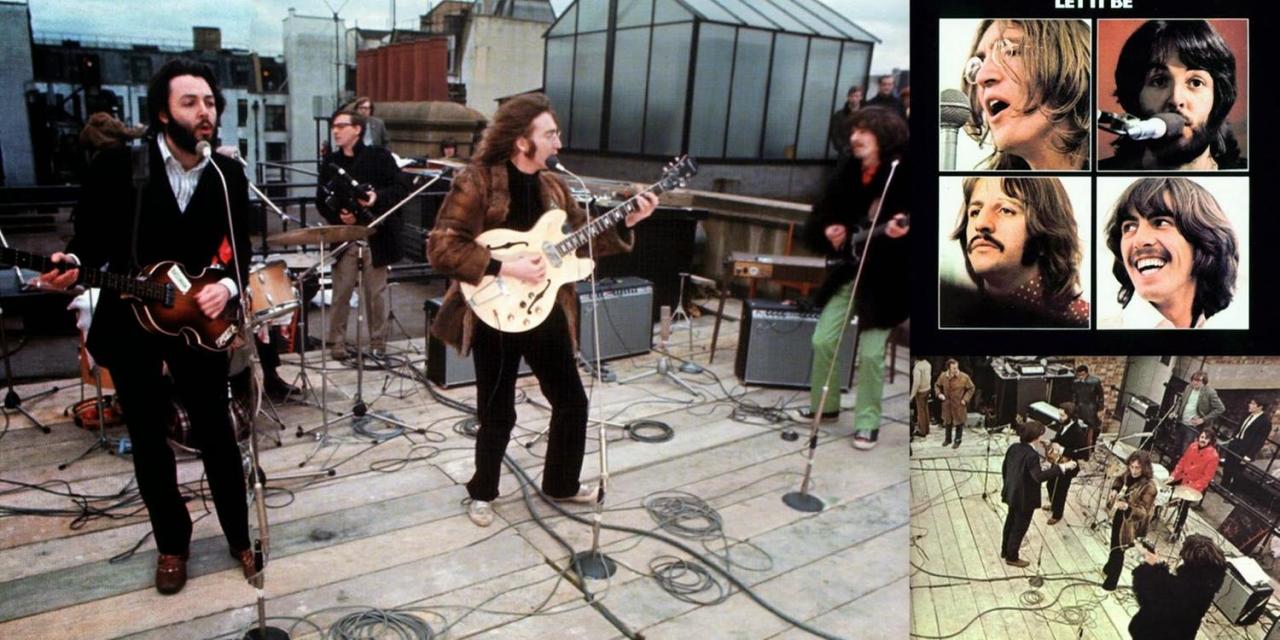
Jackson said, “We wanted to give the fans of The Beatles all over the world a holiday treat, so we put together this five-minute sneak peek at our upcoming theatrical film ‘The Beatles: Get Back.’ We hope it will bring a smile to everyone’s faces and some much-needed joy at this difficult time.”
Acclaimed filmmaker Peter Jackson’s “The Beatles: Get Back” is a unique cinematic experience that takes audiences back in time to The Beatles’ intimate recording sessions during a pivotal moment in music history...
<iframe width="900" height="506" src="https://www.youtube.com/embed/UocEGvQ10OE" title="YouTube video player" frameborder="0" allow="accelerometer; autoplay; clipboard-write; encrypted-media; gyroscope; picture-in-picture" allowfullscreen></iframe>
https://youtu.be/UocEGvQ10OE
😎🎸
The Beatles: Get Back
Official Trailer 😎 Disney+
👇 📺 👇
Directed by three-time Oscar®-winning filmmaker Peter Jackson (“The Lord of the Rings” trilogy, “They Shall Not Grow Old”), “The Beatles: Get Back” takes audiences back in time to the band’s January 1969 recording sessions, which became a pivotal moment in music history. The docuseries showcases The Beatles’ creative process as they attempt to write 14 new songs in preparation for their first live concert in over two years. Faced with a nearly impossible deadline, the strong bonds of friendship shared by John Lennon, Paul McCartney, George Harrison, and Ringo Starr are put to the test. The docuseries is compiled from nearly 60 hours of unseen footage shot over 21 days, directed by Michael Lindsay-Hogg in 1969, and from more than 150 hours of unheard audio, most of which has been locked in a vault for over half a century. Jackson is the only person in 50 years to have been given access to this Beatles treasure trove, all of which has now been brilliantly restored. What emerges is an unbelievably intimate portrait of The Beatles, showing how, with their backs against the wall, they could still rely on their friendship, good humor, and creative genius. While plans derail and relationships are put to the test, some of the world’s most iconic songs are composed and performed. The docuseries features – for the first time in its entirety – The Beatles’ last live performance as a group, the unforgettable rooftop concert on London’s Savile Row, as well as other songs and classic compositions featured on the band’s final two albums, Abbey Road and Let It Be.
An exciting new collaboration between The Beatles and Jackson presented by The Walt Disney Studios in association with Apple Corps Ltd. and WingNut Films Productions Ltd., “The Beatles: Get Back” is directed by Peter Jackson, produced by Paul McCartney, Ringo Starr, Yoko Ono Lennon, Olivia Harrison, Peter Jackson, Clare Olssen (“They Shall Not Grow Old”) and Jonathan Clyde (“Eight Days a Week”), with Apple Corps’ Jeff Jones (“Eight Days a Week”) and Ken Kamins (“The Hobbit” trilogy) serving as executive producers. Jabez Olssen (“Rogue One: A Star Wars Story”) serves as the film’s editor, the music supervisor is Giles Martin (“Rocketman”), Michael Hedges (“The Adventures of Tintin”) and Brent Burge (“The Hobbit” trilogy) serve as the series re-recording mixers, and the music is mixed by Giles Martin and Sam Okell (“Yesterday”).
Inside the story of the Beatles documentary
Filmmaker Peter Jackson explains the technical process and the narrative arc of his new Beatles documentary “Get Back.”
👇 📺 👇
👇 📺 👇
https://youtu.be/FvWFYMk2DPg
Get Back (Remastered 2009)
👇 📺 👇
👇 📺 👇
https://youtu.be/IKJqecxswCA
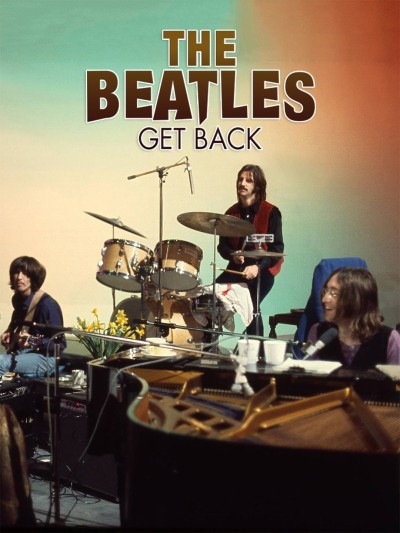
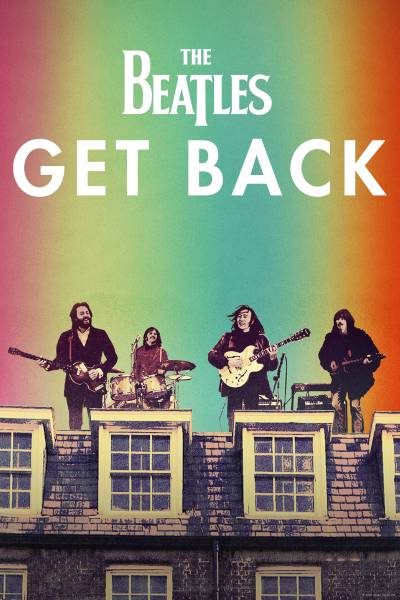


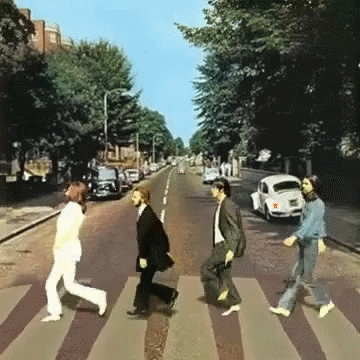
No comments:
Post a Comment